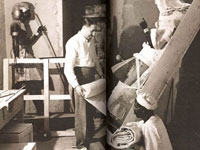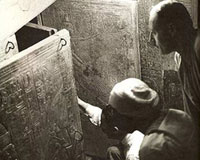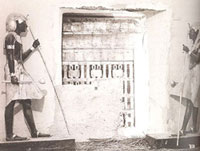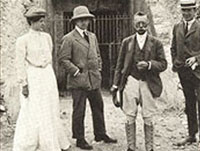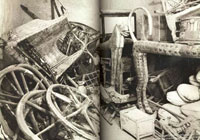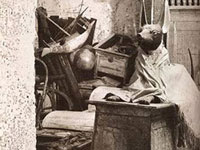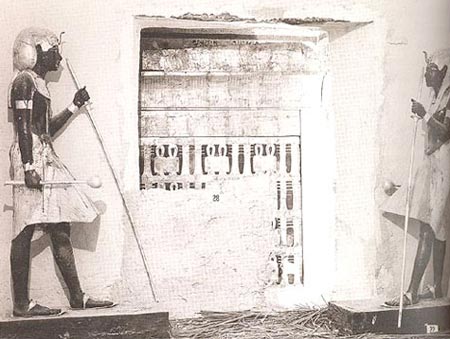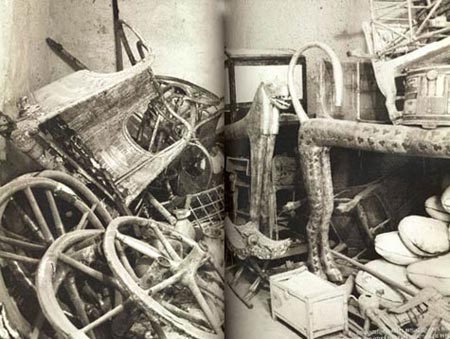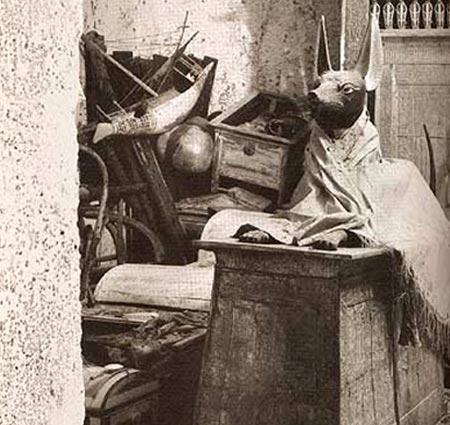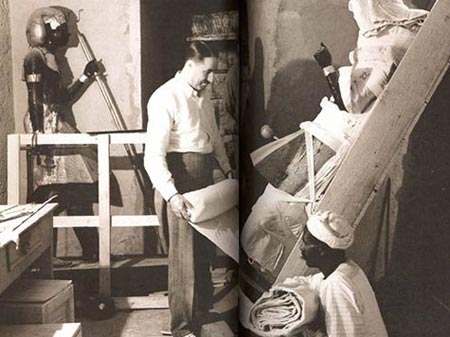Thieves invaded Tutankhamun's tomb fairly soon after his burial. The thieves were caught in the act and official inspectors reorganised the contents and resealed the tomb. Several generations later, workmen constructing the nearby tomb of another pharaoh built their huts over the young king's place of burial, thus obscuring it. Later flooding in the area erased any evidence of its existence. Tutankhamun's tomb would remain hidden for more than 3,000 years.
On November 4, 1922, workmen uncovered the top step of a staircase which archaeologist Howard Carter followed to discover eleven stairs and a sealed door. Stamped on the surface of the doorway was the Jackal-and-Nine-Captives seal of the official guards, but a royal name was not visible. He immediately sent a telegram to Lord Carnarvon in England advising him of a 'wonderful discovery', although he did not yet know quite how wonderful it would turn out to be.
"At last I have made a wonderful discovery in the valley, a magnificent tomb with seals intact; recovered same for your arrival: Congratulations!"
It wasn't until Lord Carnarvon arrived and they entered the tomb that Carter realised the extent of his discovery. He recalls his first impression in his popular book, The Tomb of Tut.ankh.Amen:
'As my eyes grew accustomed to the light, details of the room within emerged slowly from the mist, strange animals, statues and gold - everywhere the glint of gold...I was struck dumb with amazement, and when Lord Carnarvon, unable to stand the suspense any longer, inquired anxiously, "Can you see anything?" it was all I could do to get out the words, "Yes, wonderful things."'
Copy provided courtesy of The Field Museum,
all rights reserved
Photography credits: Copyright Griffith Institute,
University of Oxford
Click on images for larger version
Howard Carter and and Egyptian workman examining the doors of the fourth gilded shrine enclosing the sarcophagus of Tutankhamun.
Two life-sized figures of the king, one in a nemes headcloth and the other in khat headdress, were found flanking the entrance to the burial chamber.
Theodore David, the discoverer of Yuya and Tjuya's tomb, stands in the Valley of the Kings with Mr. and Mrs. Weigall and Mr. Ayrton.





















